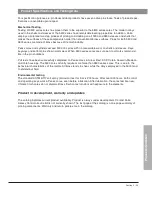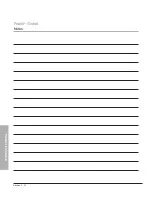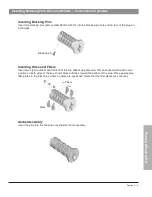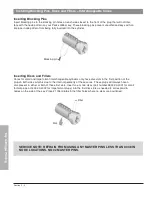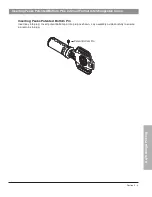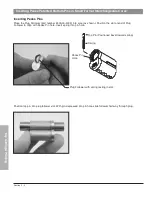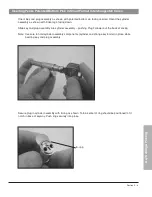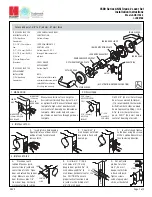
Section 3 - 12
K
e
y
C
u
tt
in
g
&
P
in
n
in
g
Peaks conventional cylinders are designed to be top loaded. Install a patent bottom pin, small end down, and
patent top pin, turned end down, in the patent chamber immediately next to the plug face. In the A2 system a
number 7 top pin should be seated above the patent top pin. In A4 use a number 4 top pin above the patent
top pin.
Pin stacks
Consult the charts on pages 3-18 and 3-21 for the correct pins. The
Universal 5400-xx-1099 and the 5400-xx-1095 key-in-knob cylinder
have large diameter plugs and require longer bottom pins and the
6140-00-3004 patent bottom pin. All conventional cylinders use the
same top pins. Observe the specified pin stack heights. After loading
the pins install a 3800-00-4010 stainless steel tumbler spring in
each chamber.
Staking
Place the cylinder in the correct cavity of the 3400-00-4000 staking
fixture. Set the correct curved spring cover in place over the springs
and hold it down with the staking tool.
Using a plastic or rawhide mallet, flatten the spring cover between
the flanges. Do not strike the bible flanges on key-in-knob cylinders.
Bending or breaking the flanges breaks the patented hard coat on
the shells and can lead to corrosion.
The chrome key-in-knob cylinder shell requires a staking tool and
new curved spring cover, 3425-00-2000. Older staking tools had a
thick blade. The blade must be narrowed to 0.125" to fit between the
bible flanges.
• Work on a firm bench surface.
• Strike tools gently with a plastic or rawhide mallet.
• Do not use excessive force.
These are the tools required for conventional cylinders:
Do not strike
bible flanges
Flatten the
spring cover
between them.
The 3400-00-4002 key-in-knob
staking tool and flat spring covers
are discontinued. Do not use this
or similar tools on chrome key-in-
knob cylinders.
3400-00-4001
staking tool
3400-00-4000 staking
fixture for conventionals
.1
25
"
Pinning Conventional Cylinders
Summary of Contents for 5140 Series
Page 1: ...Technical Manual ...
Page 5: ...Technical Manual Section 1 Introduction ...
Page 11: ...Technical Manual Section 2 Product Information ...
Page 38: ...Section 2 27 Product Information Peaks Global Notes ...
Page 39: ...Technical Manual Section 3 Key Cutting and Pinning ...
Page 62: ...Section 3 23 Key Cutting Pinning Peaks Global Notes ...
Page 63: ...Technical Manual Section 4 Key Control Record Keeping ...
Page 73: ...Technical Manual Section 5 Cylinder Installation Guide ...
Page 84: ...Section 5 11 Cylinder Installation Guide Peaks Global Notes ...
Page 85: ...Section 5 12 Cylinder Installation Guide Peaks Global Notes ...

